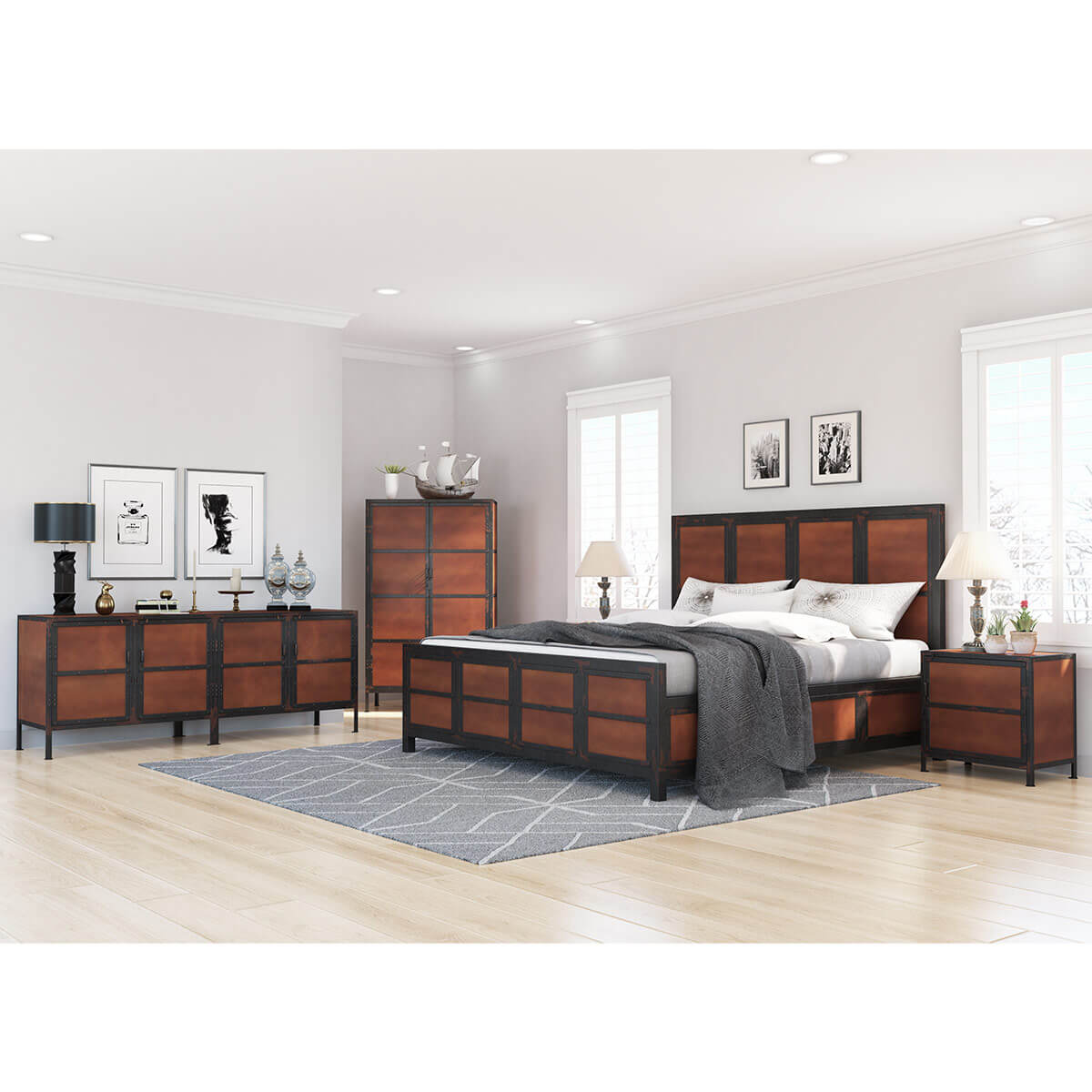All Categories
Featured
When embellishing a home, picking the right furnishings style plays an important duty in shaping the atmosphere of a space. 2 of the most prominent furnishings styles are typical and contemporary, each with its one-of-a-kind characteristics.
Typical Furniture: Typical furniture accepts ornate layouts, elaborate makings, and traditional forms inspired by past historical durations. Traditional furnishings has a formal, advanced look, and the focus is on fine workmanship.
![]()
Conventional Furniture: Traditional furniture is known for its usage of abundant, high-grade materials such as solid timber, leather, and natural fabrics. Traditional furnishings surfaces have a tendency to be sleek and dark, providing items a feeling of weight and high-end.
Standard Furnishings: Traditional furnishings frequently uses deeper, richer shades that evoke a feeling of warmth and beauty. Furthermore, patterns are regularly utilized in conventional furnishings, such as floral prints, red stripes, or damask, including depth and structure to the room's layout.
![]()
Typical Furniture: While convenience is vital in conventional furnishings, it is not constantly the main emphasis. Conventional furnishings highlights high-end and style, typically featuring cushioned seating and thick upholstery.
![]()
Standard Furnishings: Traditional furniture has a tendency to stand out more in a space because of its classic and ornate layout components. It works well in more formal settings, such as a classic living-room, a research study, or a dining-room. While it can be blended with contemporary aspects for an updated look, typical furnishings generally preserves its very own identification and can really feel leading within a room. This design commonly flourishes in huge, stately areas with a feeling of splendour.
Typical Furnishings: Typical furniture is developed to last and never ever goes out of style. For house owners looking for withstanding, classic furnishings that maintains its value and elegance, standard pieces are an excellent investment.
Final thought. Inevitably, the choice in between typical and modern furnishings comes down to your personal choices and the sort of atmosphere you desire to develop in your home. Contemporary furniture is sleek, practical, and versatile to present trends, while standard furniture is ageless, luxurious, and concentrated on intricate information. By comprehending the essential distinctions between these 2 designs, you can much better curate a home that mirrors your preference, way of living, and the ambiance you prefer.
- Style and Forming. Contemporary Furniture: Contemporary furnishings is understood for its streamlined, minimalist layouts that prioritize simplicity and performance. The lines are sharp and frequently tidy, with a focus on geometric forms and smooth, smooth surfaces. This design shows the patterns of the present and is ever-evolving. Contemporary furnishings can integrate elements from various periods, making it very functional. Common features include inconspicuous designs, open areas, and furnishings that has a tendency to have a structured look.
Typical Furniture: Typical furniture accepts ornate layouts, elaborate makings, and traditional forms inspired by past historical durations. Traditional furnishings has a formal, advanced look, and the focus is on fine workmanship.

- Products and Finishes. Contemporary Furnishings: Contemporary furniture uses a diverse series of products, consisting of timber, glass, steel, acrylic, and occasionally natural leather. The finishes are usually streamlined and contemporary, with high gloss, matte, or perhaps brightened steel surface areas. While modern furnishings does include timber, the materials often tend to be lighter and less luxuriant compared to standard pieces. Metal accents, glass tabletops, and also combined products are commonly found in modern furniture pieces, adding to a tidy, streamlined appearance.
Conventional Furniture: Traditional furniture is known for its usage of abundant, high-grade materials such as solid timber, leather, and natural fabrics. Traditional furnishings surfaces have a tendency to be sleek and dark, providing items a feeling of weight and high-end.
- Shade Palette. Contemporary Furniture: Contemporary furnishings embraces neutral, underrated shades, with tones like white, gray, black, and beige commonly featured. These colors help create a spacious, airy feeling that allows for versatility in designing. Bold accent shades are often included to make a declaration, such as bright toss cushions, rugs, or art work. The color scheme in modern furniture is typically maintained simple to allow various other layout aspects to shine, producing a well balanced and cohesive room.
Standard Furnishings: Traditional furnishings frequently uses deeper, richer shades that evoke a feeling of warmth and beauty. Furthermore, patterns are regularly utilized in conventional furnishings, such as floral prints, red stripes, or damask, including depth and structure to the room's layout.
- Convenience and Performance. Contemporary Furniture: Capability is a central element of contemporary furnishings. Contemporary furniture additionally often tends to have less decoration, which permits it to mix flawlessly into various kinds of spaces without overpowering the room.

Typical Furniture: While convenience is vital in conventional furnishings, it is not constantly the main emphasis. Conventional furnishings highlights high-end and style, typically featuring cushioned seating and thick upholstery.
- Style Assimilation. Contemporary Furniture: Contemporary furniture is created to fit with the fads of the time, and as an outcome, it works well in modern and minimal spaces. It blends easily with a selection of interior decoration styles, from mid-century modern-day to commercial and Scandinavian. Because contemporary furnishings welcomes simpleness, it can additionally be integrated with more conventional pieces to develop an eclectic appearance. Its adaptability permits it to function well in open-plan designs and more portable home.

Standard Furnishings: Traditional furniture has a tendency to stand out more in a space because of its classic and ornate layout components. It works well in more formal settings, such as a classic living-room, a research study, or a dining-room. While it can be blended with contemporary aspects for an updated look, typical furnishings generally preserves its very own identification and can really feel leading within a room. This design commonly flourishes in huge, stately areas with a feeling of splendour.
- Longevity and Timelessness. Contemporary Furnishings: Contemporary furnishings, due to its connection to existing layout patterns, can sometimes really feel dated as patterns advance. Its clean, minimal visual and usage of top notch materials often ensure it remains pertinent for numerous years, especially when it focuses on timeless modernist aspects. While contemporary furnishings may not have the same historic weight as traditional pieces, it can still stand the test of time via its adaptability and recurring adjustment to brand-new trends.
Typical Furnishings: Typical furniture is developed to last and never ever goes out of style. For house owners looking for withstanding, classic furnishings that maintains its value and elegance, standard pieces are an excellent investment.
Final thought. Inevitably, the choice in between typical and modern furnishings comes down to your personal choices and the sort of atmosphere you desire to develop in your home. Contemporary furniture is sleek, practical, and versatile to present trends, while standard furniture is ageless, luxurious, and concentrated on intricate information. By comprehending the essential distinctions between these 2 designs, you can much better curate a home that mirrors your preference, way of living, and the ambiance you prefer.
Latest Posts
The Benefits of Consistent Car Maintenance at Montclare Auto Repair Saves You Money
Published en
1 min read
How Regular Vehicle Maintenance at Montclare Auto Repair Keeps Your Wallet Happy
Published en
1 min read
Find Leading Vehicle Maintenance Services from Montclare Auto Repair – Keep Your Car Running Smoothly
Published en
1 min read
More
Latest Posts
The Benefits of Consistent Car Maintenance at Montclare Auto Repair Saves You Money
Published May 30, 25
1 min read
How Regular Vehicle Maintenance at Montclare Auto Repair Keeps Your Wallet Happy
Published May 28, 25
1 min read
Find Leading Vehicle Maintenance Services from Montclare Auto Repair – Keep Your Car Running Smoothly
Published May 25, 25
1 min read